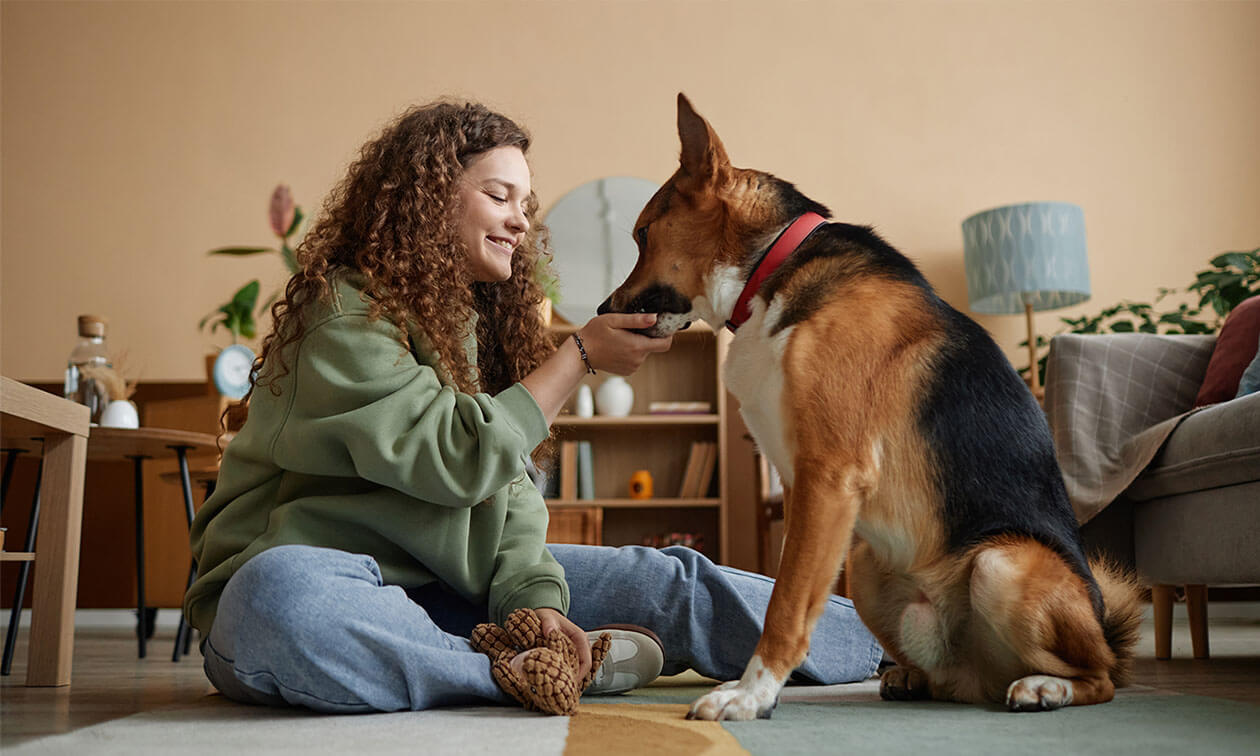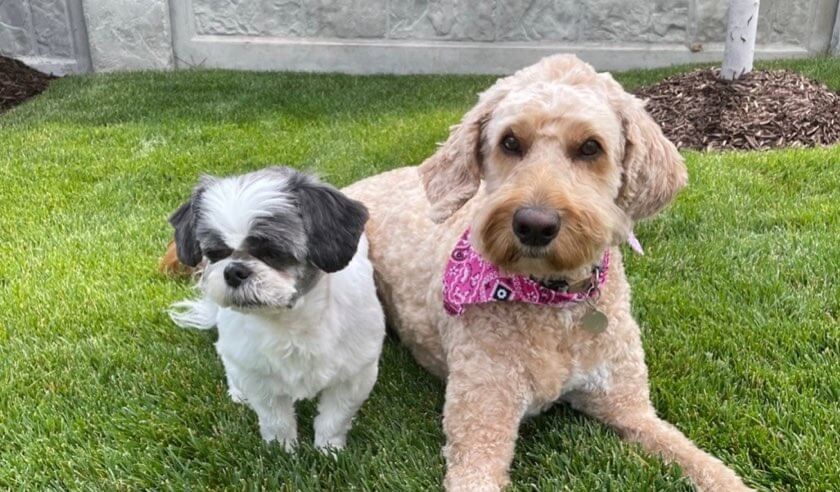Many dog owners struggle with teaching their dog what “no” means. While it may seem simple at first, the reality is that teaching a dog “no” is different than teaching any other training cue. “No” is our human way of telling a dog to not do something. However, not doing something is not a behavior, and dogs don’t understand the absence of behavior like we do. Dogs also don’t arrive preprogrammed to know what “no” means – it’s just another sound that people make.
We must shift our mindset to what we want our dog to do instead of the unwanted behavior. This requires you to teach your dog what “yes” means. “Yes” predicts a reward, and you say “yes” whenever your dog is doing the behavior you like — especially a behavior that is incompatible with the unwanted behavior, like calmly greeting someone instead of jumping on them. Then, you can more effectively use “no” as a simple interruption word for when the unwanted behavior occurs.
Positive reinforcement is key in dog training, and teaching a dog to associate positive behaviors with rewards is crucial in building a trusting relationship and to have faster and more effective training.
With that said, let’s dive into the steps and training techniques for teaching a dog “no.”
Step 1: Define What “No” Means
The first step in teaching a dog “no” is clearly defining what the word means to your dog. In essence, “no” should be a signal to the dog to stop whatever they are doing and look at or move towards you. It’s important to use a clear, calm, and consistent tone of voice when using the word “no” and to avoid shouting or yelling. You want your dog to want to stop and come to you rather than get scared or anticipate something negative when they hear the word “no.”
If your dog is engaging in unwanted behavior, calmly say “no” and walk over to them to interrupt the behavior. You may need to gently guide them away from someone or something. They may need a short break in another room or a longer separation from whatever is triggering the unwanted behavior.
With repetition, a dog learns that “no” means that what they are doing is unwanted, and you will come interrupt it. Usually, dogs start to turn toward the person when they hear no because they know what to anticipate.
Step 2: Establish Boundaries and Expectations
Next, it’s important to define boundaries for your dog. This means identifying what behaviors you want your dog to avoid and setting up the environment for success. You want to avoid saying the word “no” as much as you can.
For example, if you don’t want your dog jumping on guests, keep them on leash and close to you or behind a gate when guests are over. Ideally, this management will mean they can’t practice the jumping, and it gives you a chance to reward staying with four paws on the floor with attention. If they do jump, you can calmly say “no” and then remove them from the room. Consistency is key in establishing these expectations, and all members of the household should be on board with enforcing them.
Step 3: Be Consistent
Speaking of consistency, it’s essential to maintain a consistent approach when training your dog. This means using the same tone of voice and body language each time you use “no” and consistently enforcing the expectations that you’ve established. It’s important to avoid mixed signals, as confusing messages can lead to frustrated dogs.
Step 4: You Should Use “No” Sparingly
If you find that you are saying “no” constantly for a particular behavior, then you need to step back and evaluate what’s happening. This can be a great moment to bring in the expertise of a certified dog trainer to help. Your dog’s environment may be too distracting, they might not know what you want them doing, or they find the unwanted behavior more reinforcing than what you’re offering. You shouldn’t be saying “no” that often to your dog, so if you are, it’s time to change the setup.
Dos and Don’ts of Teaching a Dog “No”
In addition to the steps listed above, there are certain dos and don’ts that dog owners should keep in mind.
Dos
- Use a clear, calm, and consistent tone of voice when using “no.”
- Reinforce positive behaviors with praise and treats.
- Establish consistent expectations for your dog.
- Remain patient and consistent in your training approach.
Don’ts
- Use aggressive or threatening body language when using “no.”
- Use physical punishment to correct negative behaviors.
- Allow your dog too much freedom in scenarios if they are likely to practice unwanted behaviors.
- Get frustrated or discouraged if your dog doesn’t immediately respond.
Teaching a dog “no” may seem like a daunting task, but with the right approach, patience, and consistency, anyone can successfully add this to their dog’s vocabulary. Remember, the key is to remain calm and collected throughout the training process and to reinforce positive behaviors with “yes” and rewards whenever possible. With patience and practice, your dog will learn to respond to “no” and other essential cues, leading to a happier and healthier canine companion.
ZPC-03649





